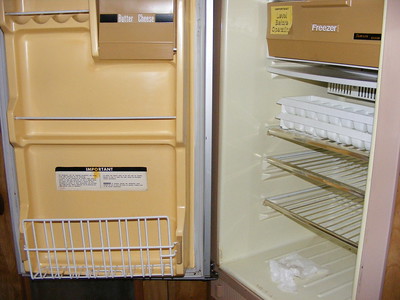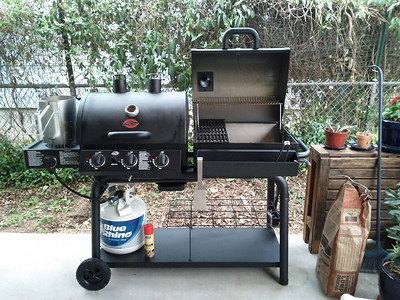
Butane, a flammable hydrocarbon gas, does not generally require refrigeration for storage. It is commonly used as a fuel source in various applications, such as cigarette lighters, portable stoves, and camping appliances. In order to maintain butane in a liquid state, it is typically stored in pressurized containers or canisters.
Refrigeration is not necessary for the safe storage of butane; however, it is essential to follow specific guidelines to ensure its safe handling and storage. These guidelines include:
- Store butane in a cool, dry, and well-ventilated area: It is important to keep butane containers away from heat sources, open flames, and direct sunlight, as exposure to high temperatures can cause the pressure inside the container to increase. This elevated pressure could potentially lead to an explosion or rupture of the container.
- Keep away from ignition sources: Since butane is highly flammable, it is crucial to store it away from any sources of ignition, such as electrical outlets, sparks, or static electricity. This will minimize the risk of accidental ignition and subsequent fire.
- Follow manufacturer’s instructions: Always read and adhere to the manufacturer’s guidelines for proper storage and handling of butane. This will provide detailed information on the precautions to take, as well as the appropriate temperature range for storage.
- Store in an approved container: Ensure that butane is stored in a container specifically designed and approved for its storage. These containers are made to withstand the pressure of the gas and minimize the risk of leakage or rupture.
- Keep out of reach of children: Butane containers should be stored in a secure location that is inaccessible to children. This will help prevent accidental ingestion or exposure to the gas. Here are some tips when storing canister in the house.
- Monitor for leaks: Regularly inspect the storage area for any signs of leaks, such as a strong odor or hissing sound. If a leak is detected, evacuate the area and contact the appropriate authorities for assistance.
- Properly dispose of empty containers: Follow local regulations and guidelines for the disposal of empty butane containers. This will help prevent environmental pollution and reduce the risk of accidental ignition.
While refrigeration is not required for the storage of butane, it is important to follow proper safety guidelines to minimize the risk of accidents and ensure the safe handling of this flammable gas.
Here’s an article about Why Butane is Cold After Use?
When Storing Consider the Right Temp
When storing butane, it is important to consider the right temperature to ensure its safe storage and handling. The recommended temperature range for storing butane is no colder than 32 degrees Fahrenheit (0 degrees Celsius) and no warmer than 125 degrees Fahrenheit (52 degrees Celsius).
Storing butane within this temperature range helps maintain the integrity of the pressurized container and minimizes the risk of pressure-related issues such as leaks or explosions. It is also important to store butane in a cool, dry, and well-ventilated area away from heat sources, open flames, and direct sunlight to further ensure safety.
Always follow the manufacturer’s guidelines and recommendations for the specific butane product you are using, as the ideal storage temperature may vary between products.
Butane Storage Requirements
Pressurized Containers for Liquid State Storage:
Butane is stored in pressurized containers or canisters to maintain it in a liquid state. These containers are specifically designed to withstand the pressure exerted by the gas, ensuring safe storage and minimizing the risk of leakage or rupture. The pressurized containers make it convenient for various applications, such as lighters and portable stoves.
Temperature Range for Safe Storage (32°F to 125°F):
To ensure the safe storage and handling of butane, it is essential to store it within a recommended temperature range. The ideal temperature range for storing butane is between 32 degrees Fahrenheit (0 degrees Celsius) and 125 degrees Fahrenheit (52 degrees Celsius). Maintaining butane within this temperature range helps preserve the integrity of the pressurized container and minimize pressure-related risks.
No Need for Refrigeration:
Refrigeration is not necessary for the storage of butane. Storing butane within the recommended temperature range, as mentioned earlier, is sufficient for its safe storage. Instead, focus on keeping the butane in a cool, dry, and well-ventilated area away from heat sources, open flames, and direct sunlight to prevent any safety hazards.
Safety Precautions When Storing Propane
Using Approved Containers for Storage:
When storing butane, it is crucial to use containers specifically designed and approved for its storage. These containers are built to withstand the pressure exerted by the gas and minimize the risk of leakage or rupture. Using unapproved or makeshift containers can lead to hazardous situations and compromise safety.
Keeping Butane Out of Reach of Children:
To prevent accidents and ensure the safety of children, store butane containers in a secure location that is inaccessible to them. This precaution helps avoid accidental ingestion, exposure, or mishandling of the highly flammable gas, which can lead to severe consequences.
Regularly Inspecting Storage Area for Leaks:
Conduct routine inspections of the storage area for any signs of leaks, such as a strong odor or hissing sound. If a leak is detected, evacuate the area immediately and contact the appropriate authorities for assistance. Prompt action can help mitigate the risks associated with leaks and prevent possible explosions or fires.
Properly Disposing of Empty Containers:
Follow local regulations and guidelines for the disposal of empty butane containers. Proper disposal helps prevent environmental pollution and reduces the risk of accidental ignition or exposure to residual gas. Some localities may have specific recycling programs or designated disposal sites for empty pressurized containers; ensure you adhere to these guidelines to promote responsible disposal practices.
In Conclusion
Butane does not need to be refrigerated for safe storage. It is important to store butane within the recommended temperature range of 32°F to 125°F to ensure the integrity of the pressurized containers and minimize potential risks. Proper storage also involves keeping butane in a cool, dry, and well-ventilated area away from heat sources, open flames, and direct sunlight.
To further ensure safety, adhere to additional precautions such as using approved containers, keeping butane out of reach of children, regularly inspecting the storage area for leaks, and properly disposing of empty containers according to local regulations. By following these guidelines and the manufacturer’s recommendations, you can minimize the risks associated with butane storage and handling, ensuring a safe environment for all.

Jeremy is a highly experienced professional propane technician with over 21 years of experience in the industry. Throughout his career, he has gained extensive knowledge and expertise in propane gas installation, maintenance, and repair, as well as in ensuring safety and compliance with industry standards. Mike has worked with various residential, commercial, and industrial clients, providing top-notch services and solutions to meet their propane needs. He is dedicated to his craft and passionate about delivering exceptional service to his clients.



